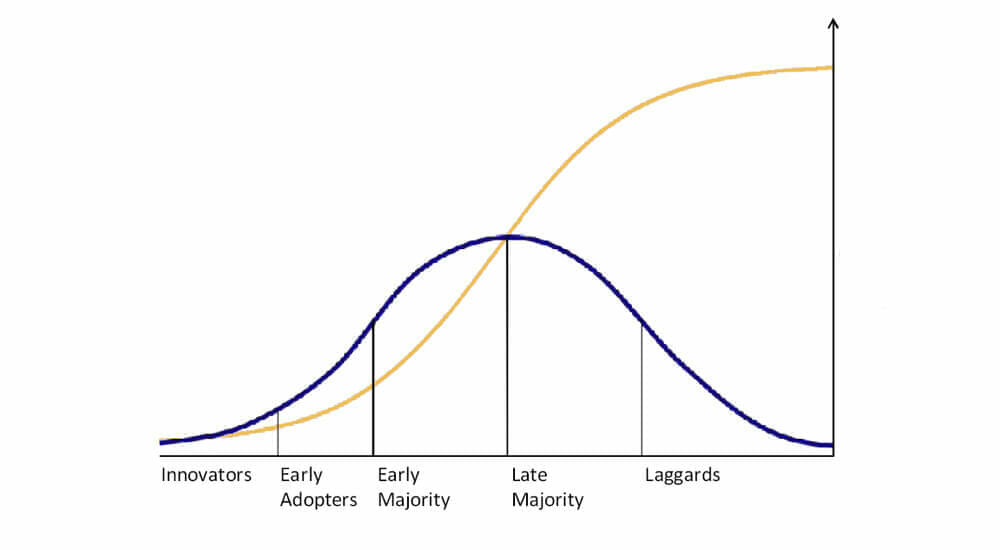In data science, new insights start by asking data science questions.


In my previous post, Data Science Culture, I describe four common cultures that develop in various types of organizations:
Certain cultures are more conducive to data science than others, and in some cultures, the organization may resist any attempt to introduce a data science team into the mix. When you're starting a data science team, the ability to overcome any cultural resistance to your team can make or break the initiative.
After you've identified your organization's culture, the next step is to implement change in the data science organization. The change you're trying to implement is to get the organization to accept a data science mind-set and perhaps even adopt that mind-set.
One of the best books on implementing organizational change is Fearless Change: Patterns for Introducing New Ideas, by Marry Lynn Manns and Linda Rising. This book is geared towards "powerless leaders" — those who have no authority — so the book is suitable for anyone at any level of the organization who wants to implement change.
In Fearless Change, the authors describe several myths of organizational change, including the following:
In addition to busting these and other common myths, the book provides strategies and techniques for steering clear of the pitfalls that often derail efforts to effect change. For example, you discover ways to deal effectively with skeptics and even learn from them (after all, they might be right and see something that you overlooked). Powerless leaders are encouraged to rally small groups of people to reach consensus and build momentum to drive change forward. You also discover ways to keep proponents on board, so they don't flip on you and undermine your efforts.
Fearless change is based on the notion that people accept ideas at different rates:
When you're trying to initiate a change in your organization, such as a change in attitude in favor of data science, start with the natural innovators and then expand the movement down through the other groups. You and a small group of innovators can introduce the idea, create some buzz about it, and start getting the others thinking about the potential benefits of data-driven decision-making and innovation. Early in the process, you're softening up the organization to make it more receptive to the change.
When you're introducing data science to various groups and individuals in your organization, avoid abstract language, such as "productivity" and "quality." Instead, talk about data science as a way to better understand the customer or a way to solve specific problems or answer specific questions the person or group is likely to encounter on a daily basis.
Better yet, provide concrete examples of how data science can help a given individual or group do their jobs better, faster, or easier and how data and analytics can make them more innovative.
One of the most effective ways to win over a majority in an organization is to prove the value of the change, so be sure to celebrate and publicize "wins" — any successful application of data science within the organization. When others in the organization see the benefits in action and see how data science has enabled others to excel at what they do, they will flock to your data science team to help them do the same.
Many organizations struggle with the technology to democratize data. Without the right technology in place, running a query or creating a report can take hours or even days depending on the volume and variety of the data, the number of queries being run, and the compute power available. In some cases, a person may wait several hours for report only to find out that the query crashed the system and needs to be run again. When others in the organization hear about these horror stories, they become reluctant to adopt the technology. However, as soon as the kinks are worked out and user-friendly business intelligence tools are rolled out, adoption rates across the organization soar. As soon as the barriers to adoption fall away and the benefits become apparent, people who resisted often become the biggest proponents of the change.
Whenever you endeavor to introduce a big change in your organization, remember to start slow and build momentum. It probably took a very long time for certain beliefs and behaviors to become ingrained in your organization, so don't expect any big change to be embraced and adopted overnight. Most importantly, don't get discouraged.
In data science, new insights start by asking data science questions.
Extract Transform Load (ETL) comes from data warehousing. The ETL process is about getting data from multiple data sources and using an ETL tool to extract value.
Most organizations have data silos. To get better insights you need to break down this siloed data.